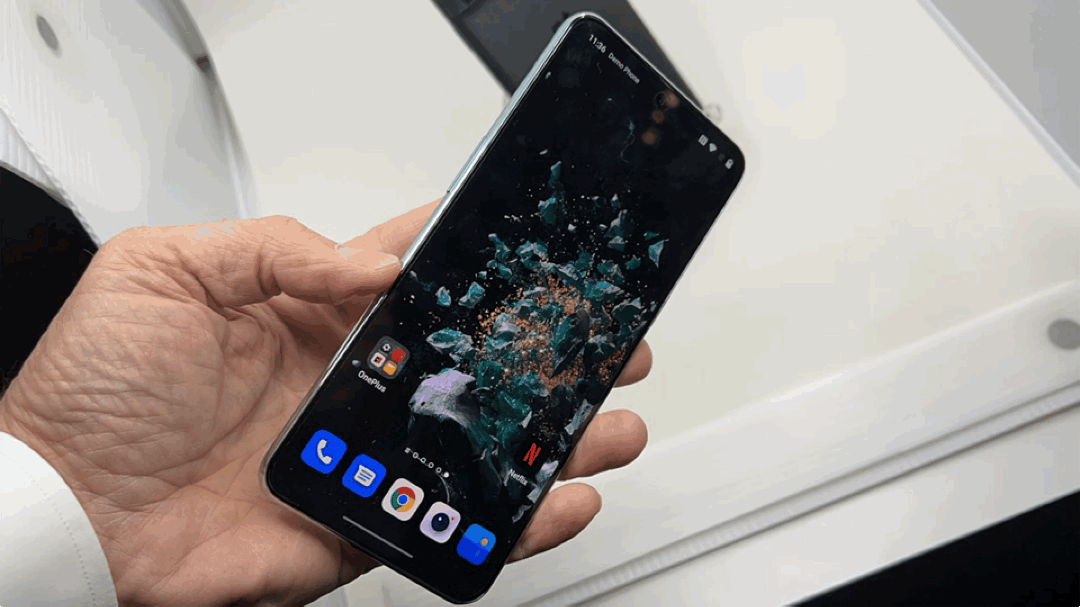Maybe I'll skip the console and buy a OnePlus 10T
I know what the OnePlus 10T is really all about

It has a powerful CPU, 16GB of RAM, a high refresh rate screen, a frame rate stabilizer specifically designed to enhance gameplay, and a complex cooling system. No, I'm not describing a gaming rig or console, just the OnePlus 10T smartphone.
OnePlus’s newest handset is a bit of an odd duck. Where most smartphones push the image capture envelope, the OnePlus10T’s camera system appears just fair, especially when compared to its big brother, the OnePlus 10 Pro.
That's not to say OnePlus didn’t tout its Sony sensor and lens capabilities when it unveiled the phone on August 3. It did, though much of what OnePlus’s camera array can do is thanks to software and not its optical gifts. The spotlight, though, was on gaming and all the hardware, software, and even accessories built to support it.

Let’s start with the mobile CPU. Even though this is a relatively affordable OnePlus model, starting at just $649 / £629, the 6.7-inch device is packed with Qualcomm’s latest: the Snapdragon 8 Plus Gen 1, which is reportedly 10% faster and 30% more power-efficient than the Snapdragon 8 Gen 1.
That might not make this CPU faster than, say, Apple’s A15 Bionic, but it’s within shooting distance. As I’ve noted in previous handset reviews, the top-tier mobile CPUs have enough power for most tasks, even CPU-intensive ones like multi-stream 4K video editing, with plenty of headroom left over for more.
I don’t think, however, I’ve ever seen a phone, at least a sub-$800 / £800 one (you pay $749 / £729 for the 16GB RAM model), so geared to gaming. Leaving aside the fast CPU and huge amount of RAM, there’s also the insane cooling system.
How will the #OnePlus10T keep its cool? A new vapor chamber cooling system pic.twitter.com/9RpNHImm3lAugust 3, 2022
OnePlus spent a lot of time during the launch event describing this wild 8-channel system in exhaustive detail. Even the name is over the top: The Next-gen 3D Cooling System 2.0. The second-generation ultra-thin vapor cooling system covers almost the entire back of the phone and, according to OnePlus, can reduce the phone's temperature by 5 degrees in one minute.
Get daily insight, inspiration and deals in your inbox
Sign up for breaking news, reviews, opinion, top tech deals, and more.

Even when I’m not playing games on a smartphone (I favor PUBG and Asphalt, but OnePlus is hot on League of Legends), I’ve noticed the phones’ backs getting quite hot, especially in the general location of the CPU. Cooling is a good idea and, as we play console-level games on these pocket-sized devices, it’s probably necessary.
I’ve read enough gaming PC and graphics card reviews to understand how frustrating it can be to suffer through dropped frames or stuttering during competitive gameplay. This is the first time I’ve encountered a phone that’s seeking to manage mobile gaming frame rates, so they don’t drop below a certain threshold during intense gameplay. That’s console, PC-rig-level stuff.
Gamers can get a special cooling case for the #OnePlus10T pic.twitter.com/ozwFlw6S4GAugust 3, 2022
If there was any doubt that OnePlus is pitching the OnePlus 10T as a mobile gaming rig, it was cast aside when the company unveiled its cooling case.
That’s right, the OnePlus 10T has its own Glacier Mat Case (first introduced with the Oppo Find X5 Pro - Oppo and OnePlus devices are essentially made by the same company). The case has a special hydrogel layer that reportedly can wick away heat and radically lower the phone’s temperature.
What does this all mean?
The OnePlus 10T looks like a good, maybe above-average Android smartphone (it’ll be even better when it gets OxygenOS 13), but I don’t think it’s the smartphone for everyone. It’s an affordable, mobile console for mobile gaming fans who play more than just Bejeweled.
Also, what’s cooler than a textured glass Moonstone Black gaming rig, amirite?

A 38-year industry veteran and award-winning journalist, Lance has covered technology since PCs were the size of suitcases and “on line” meant “waiting.” He’s a former Lifewire Editor-in-Chief, Mashable Editor-in-Chief, and, before that, Editor in Chief of PCMag.com and Senior Vice President of Content for Ziff Davis, Inc. He also wrote a popular, weekly tech column for Medium called The Upgrade.
Lance Ulanoff makes frequent appearances on national, international, and local news programs including Live with Kelly and Mark, the Today Show, Good Morning America, CNBC, CNN, and the BBC.